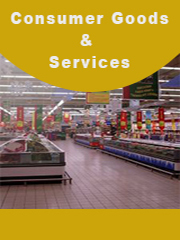Report overview
Eco-Friendly Bags are made of Organic Cotton & Recycled Cotton?Jute or Recycled Plastic and can be reused. It means that solid waste will not remain in the natural environment after it is broken, causing harm to the environment (or the harm to the environment is very small compared with other materials). General plastic bags are difficult to degrade after being discarded in the environment. Even a small part of them will produce harmful substances after decomposition. The use of environmental protection bags can avoid such environmental pollution.
This report aims to provide a comprehensive presentation of the global market for Eco-Friendly Bag, with both quantitative and qualitative analysis, to help readers develop business/growth strategies, assess the market competitive situation, analyze their position in the current marketplace, and make informed business decisions regarding Eco-Friendly Bag. This report contains market size and forecasts of Eco-Friendly Bag in global, including the following market information:
Global Eco-Friendly Bag Market Revenue, 2018-2023, 2024-2032, ($ millions)
Global Eco-Friendly Bag Market Sales, 2018-2023, 2024-2032, (Tonnes)
Global top five Eco-Friendly Bag companies in 2022 (%)
The global Eco-Friendly Bag market was valued at US$ million in 2022 and is projected to reach US$ million by 2029, at a CAGR of % during the forecast period. The influence of COVID-19 and the Russia-Ukraine War were considered while estimating market sizes.
The U.S. Market is Estimated at $ Million in 2022, While China is Forecast to Reach $ Million.
Organic Cotton & Recycled Cotton ECO Bags Segment to Reach $ Million by 2029, with a % CAGR in next six years.
The global key manufacturers of Eco-Friendly Bag include Eco-Bags, Heiko Clothing, EcoRight, Sumki, IKEA, Organic Cotton Mart, Paper Bag, Terra Thread and Simple Ecology, etc. in 2022, the global top five players have a share approximately % in terms of revenue.
We surveyed the Eco-Friendly Bag manufacturers, suppliers, distributors and industry experts on this industry, involving the sales, revenue, demand, price change, product type, recent development and plan, industry trends, drivers, challenges, obstacles, and potential risks.
Total Market by Segment:
Global Eco-Friendly Bag Market, by Type, 2018-2023, 2024-2032 ($ Millions) & (Tonnes)
Global Eco-Friendly Bag Market Segment Percentages, by Type, 2022 (%)
Organic Cotton & Recycled Cotton ECO Bags
Jute ECO Bags
Recycled Plastic ECO Bags
Others
Global Eco-Friendly Bag Market, by Application, 2018-2023, 2024-2032 ($ Millions) & (Tonnes)
Global Eco-Friendly Bag Market Segment Percentages, by Application, 2022 (%)
FMCG
Consumer Electronics
Agriculture
Pharmaceutical
Industrial Field
Others
Global Eco-Friendly Bag Market, By Region and Country, 2018-2023, 2024-2032 ($ Millions) & (Tonnes)
Global Eco-Friendly Bag Market Segment Percentages, By Region and Country, 2022 (%)
North America
US
Canada
Mexico
Europe
Germany
France
U.K.
Italy
Russia
Nordic Countries
Benelux
Rest of Europe
Asia
China
Japan
South Korea
Southeast Asia
India
Rest of Asia
South America
Brazil
Argentina
Rest of South America
Middle East & Africa
Turkey
Israel
Saudi Arabia
UAE
Rest of Middle East & Africa
Competitor Analysis
The report also provides analysis of leading market participants including:
Key companies Eco-Friendly Bag revenues in global market, 2018-2023 (Estimated), ($ millions)
Key companies Eco-Friendly Bag revenues share in global market, 2022 (%)
Key companies Eco-Friendly Bag sales in global market, 2018-2023 (Estimated), (Tonnes)
Key companies Eco-Friendly Bag sales share in global market, 2022 (%)
Further, the report presents profiles of competitors in the market, key players include:
Eco-Bags
Heiko Clothing
EcoRight
Sumki
IKEA
Organic Cotton Mart
Paper Bag
Terra Thread
Simple Ecology
Gallant
LOVE BAGS
Envirosax
BIDBI
Ecoduka
noissue
Enviro-Tote
KeenBags
ChicoBag
Simply Eco
Ecosilk Bags
Herv? Chapelier
Premium Ecobags
Outline of Major Chapters:
Chapter 1: Introduces the definition of Eco-Friendly Bag, market overview.
Chapter 2: Global Eco-Friendly Bag market size in revenue and volume.
Chapter 3: Detailed analysis of Eco-Friendly Bag manufacturers competitive landscape, price, sales and revenue market share, latest development plan, merger, and acquisition information, etc.
Chapter 4: Provides the analysis of various market segments by type, covering the market size and development potential of each market segment, to help readers find the blue ocean market in different market segments.
Chapter 5: Provides the analysis of various market segments by application, covering the market size and development potential of each market segment, to help readers find the blue ocean market in different downstream markets.
Chapter 6: Sales of Eco-Friendly Bag in regional level and country level. It provides a quantitative analysis of the market size and development potential of each region and its main countries and introduces the market development, future development prospects, market space of each country in the world.
Chapter 7: Provides profiles of key players, introducing the basic situation of the main companies in the market in detail, including product sales, revenue, price, gross margin, product introduction, recent development, etc.
Chapter 8: Global Eco-Friendly Bag capacity by region & country.
Chapter 9: Introduces the market dynamics, latest developments of the market, the driving factors and restrictive factors of the market, the challenges and risks faced by manufacturers in the industry, and the analysis of relevant policies in the industry.
Chapter 10: Analysis of industrial chain, including the upstream and downstream of the industry.
Chapter 11: The main points and conclusions of the report.
